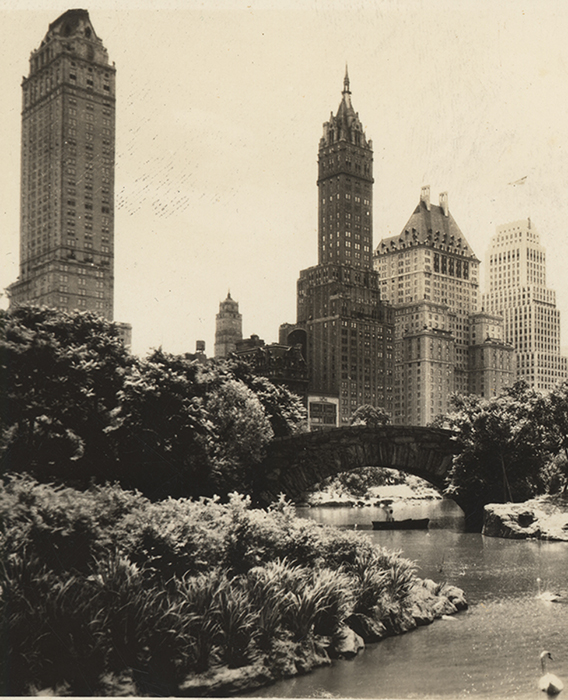The Skyscraper Museum is devoted to the study of high-rise building, past, present, and future. The Museum explores tall buildings as objects of design, products of technology, sites of construction, investments in real estate, and places of work and residence. This site will look better in a browser that supports web standards, but it is accessible to any browser or Internet device.
Hotels of the 1920s

Hotels on Central Park, 1930s.
Collection of the Skyscraper Museum
The swank hotels that lined Fifth Avenue at the southeast corner of Central Park - from left to right, the Pierre (1930) , Sherry Netherland (1927), and the Savoy-Plaza (1927, demolished in 1964), and the pointed top of the Ritz (1925) in the distance -- illustrate both the enduring attraction of park views in the luxury life of New York and a characteristic form for the 1920s-type of skyscraper hotel, a high pyramidal base surmounted by a slender tower.
Because the 1916 zoning law applied to commercial buildings, and hotels fall into the commercial-use category, hotels were able to develop a 25 percent tower just like office buildings. By contrast, apartment buildings were regulated by the tenement laws which generally capped height at 90 ft., so that hotels were the only form of residential high-rise until the Multiple Dwelling Law of 1929. The stone-faced tower of the Pierre and the romantic French Renaissance silhouette of the Sherry Netherland associated their high-class clientele, including some long-term residents in apartments, with the tradition of historical styles rather than the Art Deco modernism just coming into popularity at the time.
